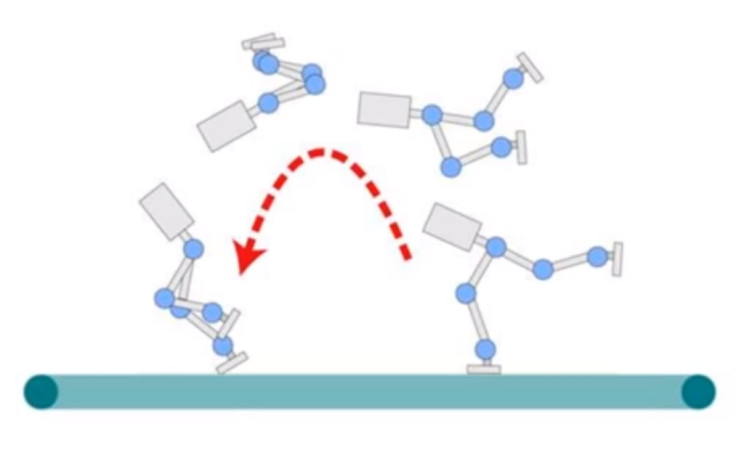Tokyo Scientists Invent Bipedal Robot That Runs and Backflips Like a Human
Achires robot made by University of Tokyo engineers can run at 4.2km an hour and do backflips

Scientists at the University of Tokyo's Ishikawa Watanabe Laboratory have developed a bipedal robot that is able to run at 4.2km/hr (2.6mph: the speed of a human adult jogging.
Achires, which stands for "Actively Coordinated High-speed Image-processing Running Experiment System" is a robot featuring legs that are only 14cm long.
The researchers say that if the robot's legs were to be increased to the length of 70cm long (the length of the average adult human's leg), then the robot would be able to run at a speed of about 10km/hr.
At the moment, most conventional robots do not have legs, but run on rollers, like Softbank's Pepper, a talking personal entertainment robot, or tire treads, like iRobot's military-grade PackBots.
"Building a robot that has legs and walks around is a very expensive proposition," iRobot chief executive Colin Angle told IBTimes UK earlier this year.
"Mother Nature has created many wonderful things but one thing we do have that nature doesn't is the wheel, a continuous rotating joint, and tracks, so we need to make use of inventions to make things simpler."
Honda's ASIMO robot is a bipedal robot and can walk, climb stairs and kick a football, but it is not yet able to run as the robot only has the functionality to move its legs, rather than its whole body.
Achires is supported by a bar, unlike ASIMO, which is a standalone robot, but it is able to run as it can pivot its hips forward, and then has the intelligence to swing one of its legs forward to kick the ground before it can lose too much balance and fall.

The scientists say they have built the robot to have high-speed vision, so it can see and recognise what is happening to it on the tread mill, including the timing of how it lands, and they have even used this to test out backflips (see video above).
"While running, the robot takes a big swing and then jumps. After jumping, both legs curl up for high speed rotation in the air. Achires is going to be improved to push the limits, while demonstrating various bipedal locomotion tasks," the researchers said in their video.
There are several groups of scientists around the world building running robots. Currently, the fastest one in the world is a KAIST Raptor that can reach a top speed of 46km/hr on a treadmill: faster than world-record sprinter Usain Bolt.
© Copyright IBTimes 2025. All rights reserved.






















